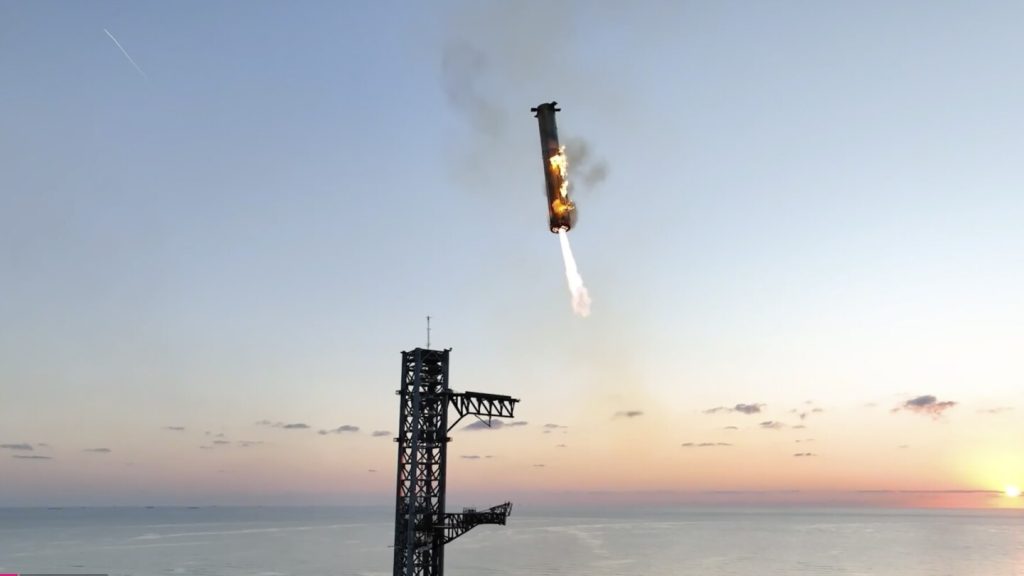On Sunday, SpaceX successfully conducted a test flight of its massive Starship rocket, with the booster returning to the launch pad and being caught by mechanical arms. Elon Musk, the CEO of SpaceX, hailed it as a significant milestone in the company’s efforts to make life multiplanetary. The rocket, standing almost 400 feet tall, took off from Texas and completed its flight without any explosions, unlike previous attempts that ended in destruction. This successful demo marked a major step forward in SpaceX’s goal of sending humans to the moon and eventually Mars.
The first-stage booster of the Starship rocket flew back to the launch pad after liftoff, where it was caught by metal arms known as chopsticks. This unique method of landing the rocket was a significant achievement for SpaceX, as it opens up new possibilities for reusable spaceflight. Company employees and NASA officials celebrated the successful test flight, with NASA Administrator Bill Nelson congratulating SpaceX on the engineering feat. The continued testing of Starship will play a crucial role in NASA’s Artemis program, which aims to land astronauts on the moon’s south pole, paving the way for future space exploration missions.
The successful capture of the returning booster by the launch pad’s mechanical arms showcased the innovative engineering capabilities of SpaceX. The retro-looking spacecraft launched by the booster completed its journey around the world, reaching a height of over 130 miles before landing in the Indian Ocean. The controlled landing of the spacecraft added to the day’s achievements, setting the stage for future missions. SpaceX has been refining the technology for reusable rockets with its Falcon 9 boosters, and the successful landing of the Starship booster marks a significant milestone in the company’s efforts to revolutionize space travel.
SpaceX’s ability to recover and reuse rocket boosters has been a game-changer in the space industry, allowing for increased launch rates and cost savings. Musk’s vision for Starship as the most powerful rocket ever built represents a major leap forward in space exploration capabilities. The successful test flight of the Starship rocket demonstrates SpaceX’s commitment to pushing the boundaries of technology and paving the way for future missions to the moon and Mars. With NASA already ordering Starships for moon missions, SpaceX’s innovative approach to space travel is poised to shape the future of human exploration beyond Earth.


